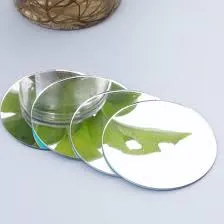

The Price of Blue Reflective Glass A Comprehensive Overview
In today's architectural and interior design landscapes, blue reflective glass has emerged as a popular choice. Its striking aesthetic appeal combined with practical benefits makes it a go-to material for various applications, from skyscrapers to residential homes and commercial spaces. However, potential buyers are often concerned about the price of blue reflective glass and how it compares to other glazing options. In this article, we will explore the pricing factors, benefits, and applications of blue reflective glass to help you make informed decisions for your next project.
Understanding Blue Reflective Glass
Blue reflective glass is manufactured by applying a reflective coating to the surface of glass. This coating not only enhances the glass's ability to reflect sunlight but also provides a stylish appearance characterized by beautiful blue hues. The reflective quality of the glass helps reduce heat absorption, making spaces more energy-efficient. It becomes an ideal choice for buildings in hot climates, where cooling costs can be significant.
Factors Affecting the Price
Several factors influence the price of blue reflective glass, and it’s essential to understand these elements before making a purchase.
1. Thickness and Size The thickness of the glass plays a vital role in determining pricing. Thicker glass offers enhanced durability and insulation properties, but it also comes at a higher cost. Additionally, larger sheets of glass will come with increased prices due to higher manufacturing and shipping expenses.
2. Quality of the Coating The quality and type of reflective coating can vary significantly between manufacturers. High-quality coatings offer better reflectivity, durability against scratches, and resistance to fading over time. These enhanced features usually come at a premium price.
3. Vendor and Location Prices can vary greatly based on the vendor and geographic location. Some suppliers may offer discounts based on bulk purchasing or ongoing sales. It's advisable to source quotes from multiple vendors to ensure you're getting a competitive rate.
4. Installation Costs The cost of installation should not be overlooked when budgeting for blue reflective glass. Professional installation can add a significant amount to the overall cost, depending on the complexity of the project and the local labor rates.
5. Customization If you're looking for custom sizes, shapes, or specific features such as tempered or laminated glass, it can significantly affect the price. Customizations often require additional processing time and special handling, leading to increased costs.
Benefits of Blue Reflective Glass

Investing in blue reflective glass offers a variety of advantages, which justify its price tag.
1. Energy Efficiency One of the most significant benefits of blue reflective glass is its energy efficiency. By reflecting sunlight, it reduces the need for air conditioning, leading to lower energy bills. This can be particularly beneficial in commercial buildings, where energy costs can be substantial.
2. UV Protection Blue reflective glass can block up to 99% of harmful UV rays, protecting your indoor furnishings, artwork, and occupants from potential damage caused by sun exposure.
3. Aesthetic Appeal The distinctive blue hue of reflective glass adds a modern and elegant touch to any design, enhancing curb appeal and property value. It’s a favored choice among architects and designers who aim to create eye-catching exteriors.
4. Privacy The reflective surface of the glass provides an additional layer of privacy during the daytime. Unlike clear glass, it is more difficult for outside observers to see inside, making it ideal for office buildings and residential properties.
Applications of Blue Reflective Glass
Blue reflective glass is versatile and can be utilized in various applications, including
- Commercial Buildings Skyscrapers, office complexes, and shopping centers often feature blue reflective glass to create striking facades while enhancing energy efficiency and occupant comfort.
- Residential Projects Homeowners are increasingly opting for this glass in windows, patio doors, and sunrooms for its aesthetic qualities and energy-saving properties.
- Interiors Designers use blue reflective glass in interior spaces, such as partitions and decorative elements, to create a unique atmosphere while still benefiting from its reflective qualities.
Conclusion
When considering blue reflective glass for your next project, it is crucial to evaluate the factors that influence its price, along with the benefits it offers. While it may be more expensive than standard glass, its long-term advantages in energy efficiency, aesthetics, and UV protection make it a worthy investment. By thoroughly researching vendors and exploring your options, you can find the right balance between quality and cost, ensuring that your project meets both your budgetary constraints and design aspirations.